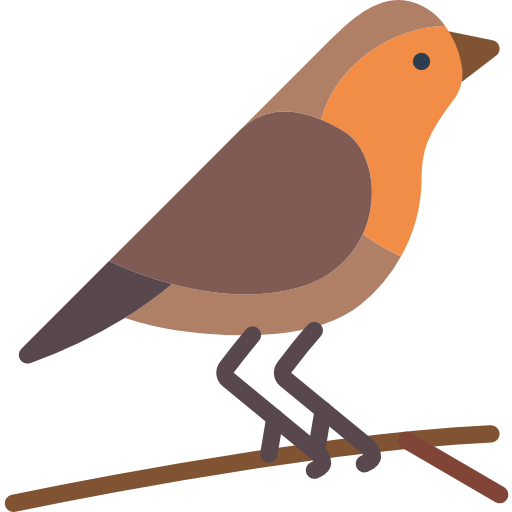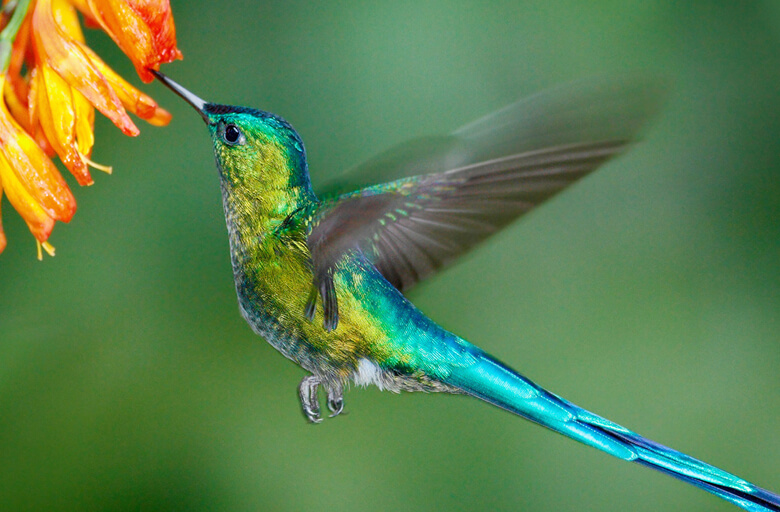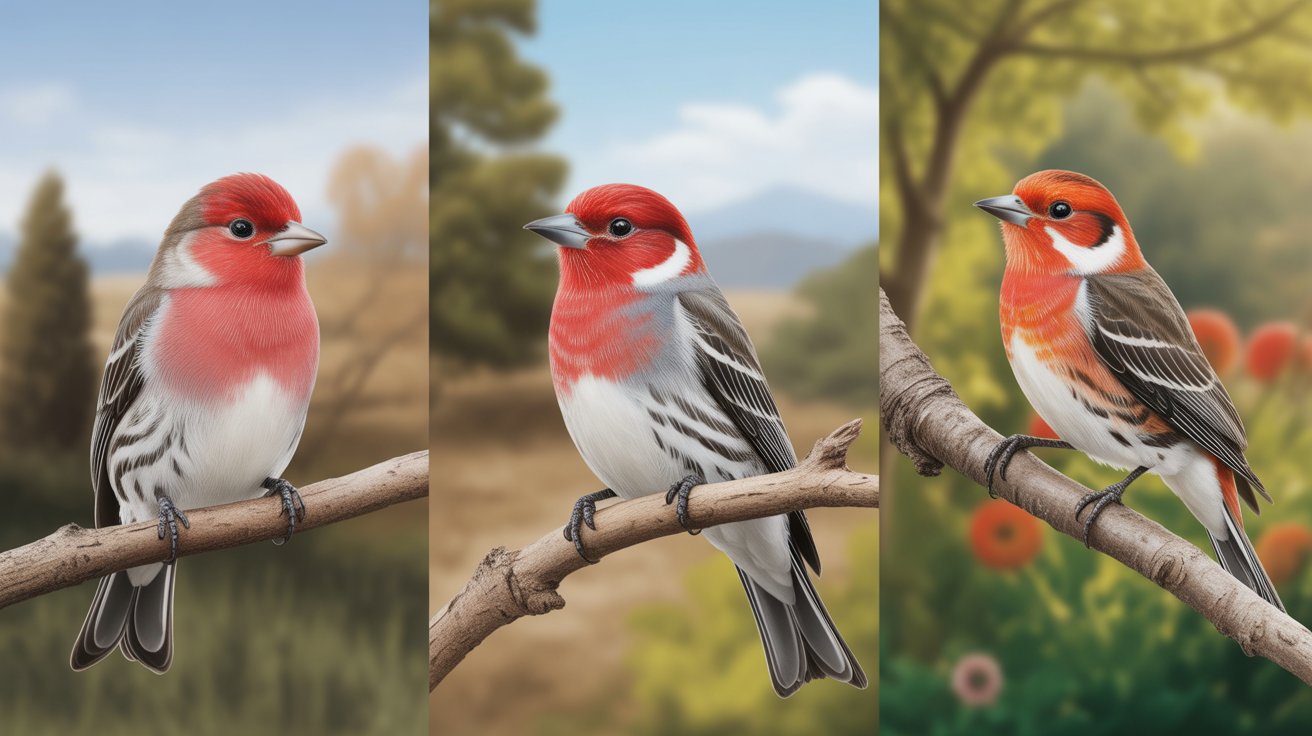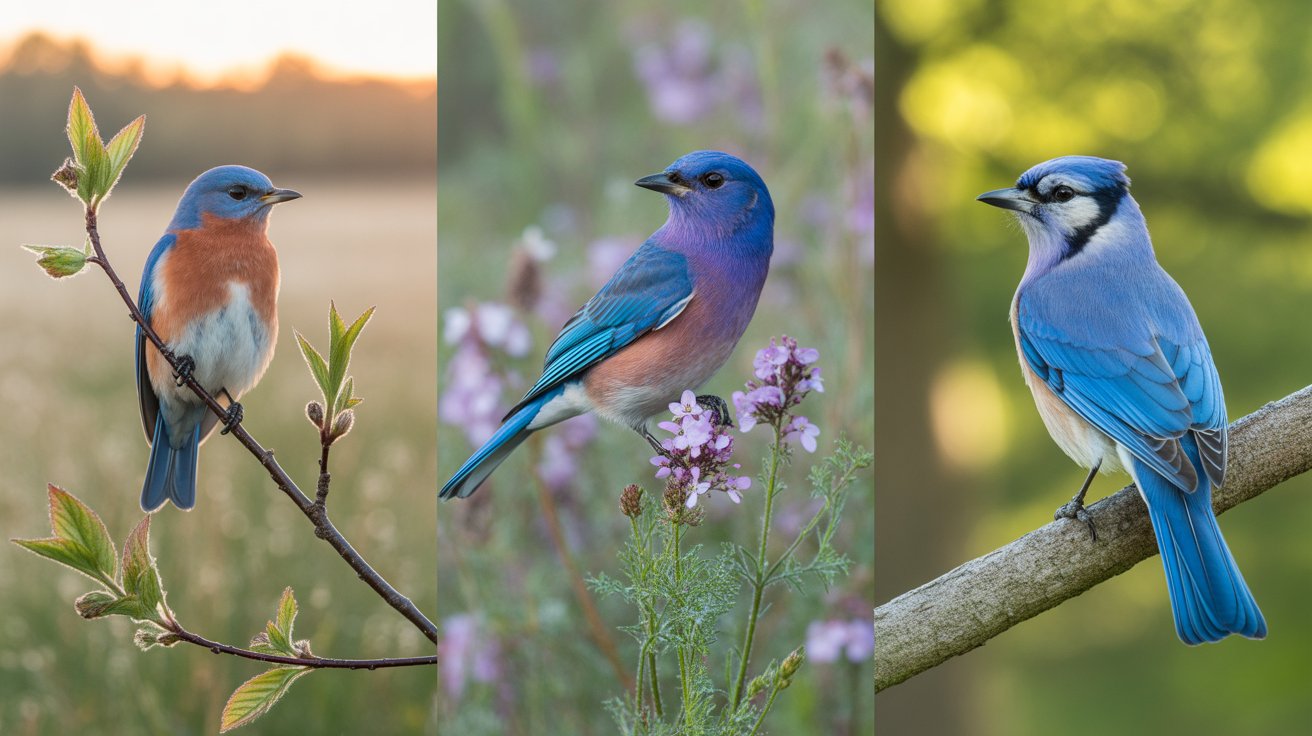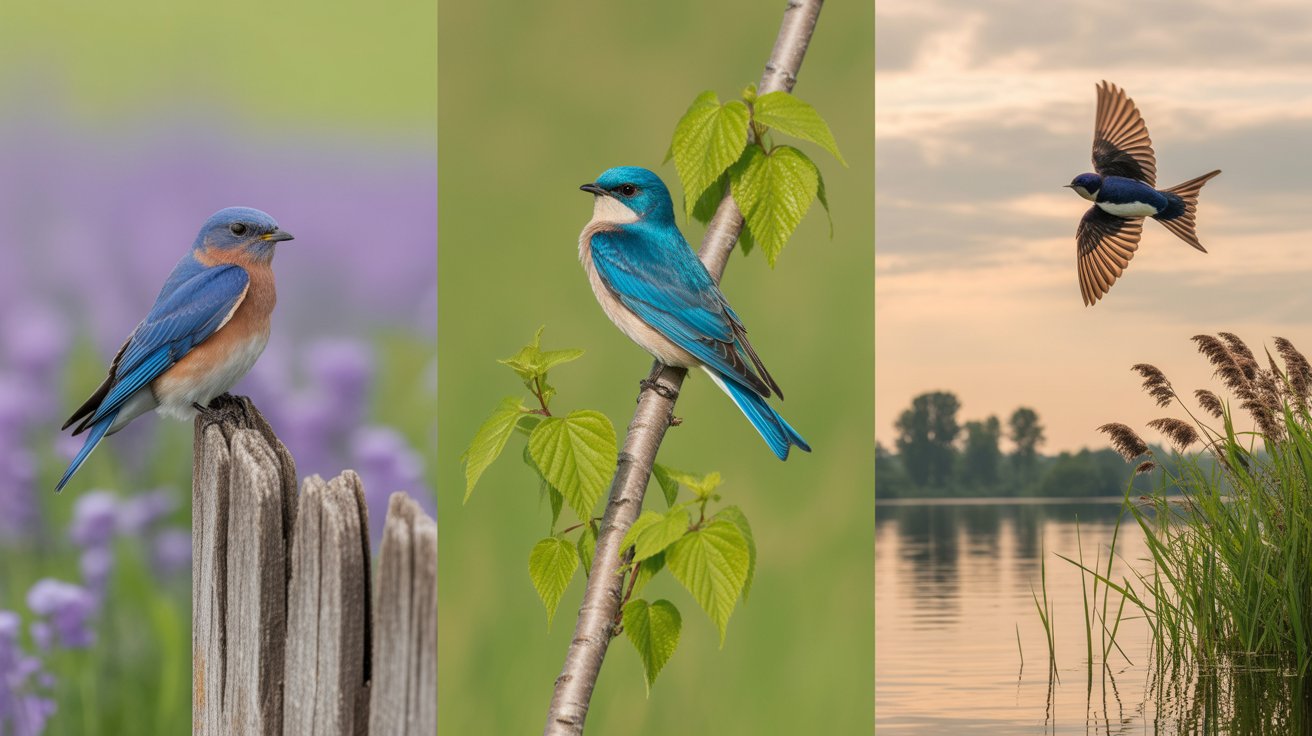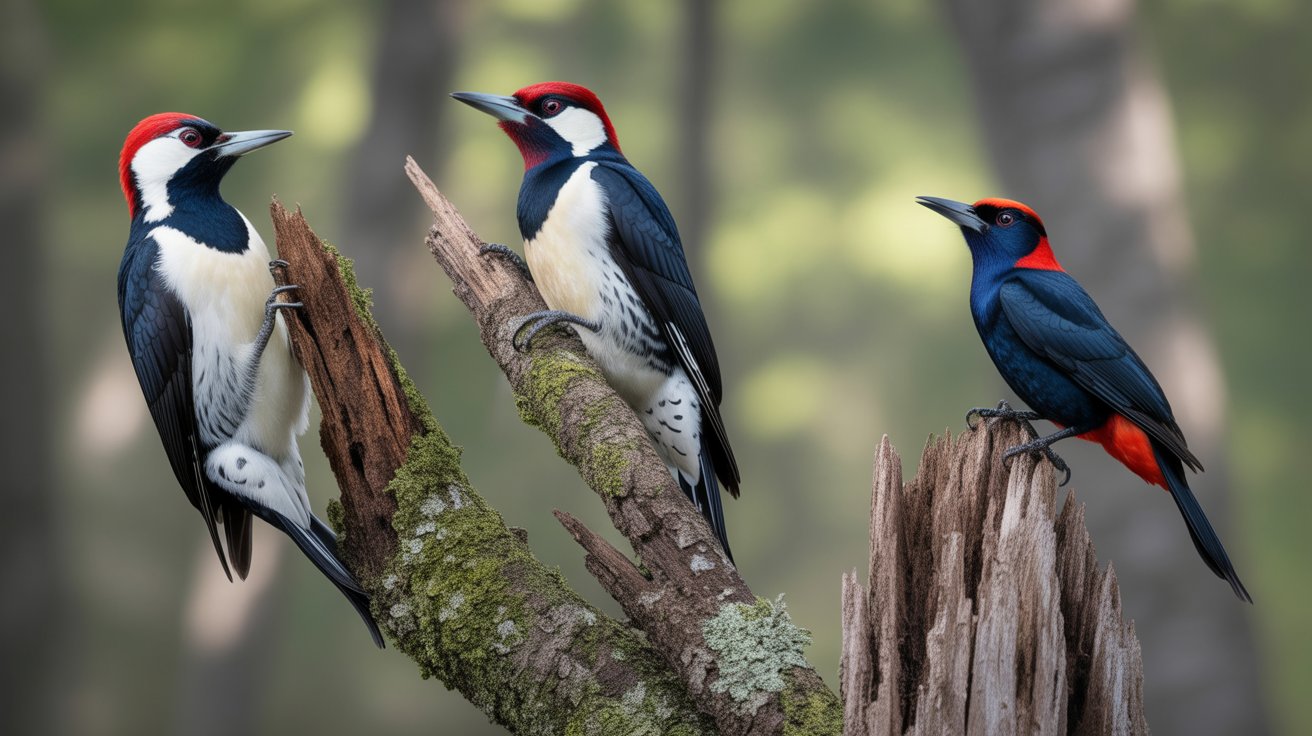If you’re captivated by hummingbirds and their dazzling feathers, the Long-tailed Sylph will truly steal your heart. This striking bird looks like it fluttered right out of a fairytale. With its shimmering blue-green plumage and a long, flowing tail, the Long-tailed Sylph is a favorite among birdwatchers and photographers alike. You might spot it darting through the cloud forests of South America, flashing iridescent colors under the sun as it hovers near flowers.
This bird isn’t just about beauty—it’s also packed with fascinating behaviors and unique features that set it apart. From its tail that can be longer than its body to its specialized feeding habits, the Long-tailed Sylph is a natural wonder that deserves the spotlight.
Whether you’re a beginner birder or a seasoned nature enthusiast, exploring the world of the Long-tailed Sylph will deepen your appreciation for the wonders of wildlife. Let’s take a closer look at everything that makes this bird so remarkable—from its classification to breeding secrets and beyond.
Long-tailed Sylph: The Jewel of the Andes
Scientific Classification
- Scientific Name: Aglaiocercus kingii
- Family: Trochilidae (Hummingbird family)
- Order: Apodiformes
- Class: Aves
The Long-tailed Sylph belongs to the hummingbird family and is closely related to other sylphs. It is one of the more visually striking species due to its spectacular tail and brilliant coloration. Males are especially flamboyant, while females have a shorter tail and more subdued colors.
Physical Description
You’ll be amazed by how stunning this bird looks in real life—or even in a good photo.
- Length: 18–22 cm (7–8.6 inches), including the tail
- Weight: 5–6 grams (0.18–0.21 oz)
- Wingspan: Around 11 cm (4.3 inches)
The male Long-tailed Sylph is best known for its two long, iridescent blue tail streamers that can be twice as long as its body. Its back shimmers in metallic green, and its underparts are often bluish or purplish. The throat shines with vibrant turquoise or sapphire hues.
Females, in contrast, are smaller with much shorter tails. They display green upperparts and whitish underparts, sometimes with a speckled or buff tint on the throat.
The beak is long, straight, and slightly curved—perfect for sipping nectar. Their eyes are dark, round, and alert, giving them an ever-curious expression.
Habitat and Distribution
The Long-tailed Sylph is a bird of the Andean cloud forests in South America. You’ll typically find it in:
- Colombia
- Ecuador
- Peru
- Venezuela
They prefer humid, montane forests and edges of woodlands, thriving at elevations between 1,200 and 3,000 meters. You’re most likely to spot them along forest clearings, streams, or areas rich in flowering plants.
Despite habitat loss in some regions, the Long-tailed Sylph adapts well to semi-open areas and is even seen in gardens and reserves that maintain native flowering plants.
Behavior
This hummingbird is not just a feast for the eyes—it’s also full of personality. The Long-tailed Sylph is known for being:
- Territorial: Males aggressively defend feeding areas.
- Energetic flyers: Like other hummingbirds, they can hover and even fly backward.
- Solitary: Except during mating, they mostly keep to themselves.
Males often perform aerial displays during courtship, using their long tails to impress females. You’ll notice a soft buzzing sound from their wings as they zip between flowers with unmatched agility.
These birds are quite bold and can become used to human presence, especially in reserves and protected parks.
Diet
The Long-tailed Sylph feeds primarily on:
- Nectar: Sourced from native tubular flowers
- Insects: Small arthropods like gnats, aphids, and spiders
Using their slender, curved bills, they insert their tongues into flowers and extract nectar while hovering in mid-air. Their diet provides high energy to sustain their fast-paced flying.
Insects are an essential part of their diet, especially during breeding season, when protein is crucial for chick development.
They often follow a foraging route called a “trapline,” visiting the same flowers in a repeated sequence to maximize energy intake.
Breeding and Nesting
Breeding season varies slightly by region, but usually occurs during the wet season, when flowers and insects are most abundant.
- Nest: Small, cup-shaped, made of moss, plant fibers, and spider webs
- Location: Usually on tree branches, hanging 2–5 meters above the ground
- Eggs: Typically 2 white eggs
- Incubation period: Around 15–17 days
- Fledging: Chicks leave the nest about 20–25 days after hatching
Only the female takes part in nest-building, incubation, and feeding the chicks. Males are absent after mating.
The use of spider silk allows the nest to be elastic, expanding as the chicks grow. It’s one of nature’s most fascinating adaptations.
Interesting Facts
- Tail Drama: The male’s long tail makes up more than half its body length but also creates drag, making flight more energetically costly.
- Color Magic: Its feathers appear to change color depending on the angle of light, a result of microscopic structures in the plumage—not pigment.
- Species Name: The name kingii honors Admiral Philip Parker King, a 19th-century British naval officer and explorer.
- Pollination Helper: While feeding, the bird inadvertently transfers pollen, playing a vital role in the ecosystem.
- Adaptable: Though a forest dweller, the Long-tailed Sylph readily visits gardens and feeders, especially in bird reserves.
Frequently Asked Questions
1. Is the Long-tailed Sylph endangered?
No, the Long-tailed Sylph is currently listed as Least Concern by the IUCN. However, habitat loss due to deforestation can impact local populations.
2. Where can I see a Long-tailed Sylph in the wild?
Your best chance is visiting cloud forests in Colombia and Ecuador, particularly in bird reserves like Mindo Cloud Forest and the Eastern Andes.
3. What do Long-tailed Sylphs eat besides nectar?
They also consume small insects and spiders, especially during the breeding season for protein intake.
4. Why do only males have long tails?
The long tail is a result of sexual selection. Females choose mates based on tail length and color brilliance, seeing it as a sign of health and vitality.
5. Can you attract Long-tailed Sylphs to gardens?
Yes, if you live in their natural range, you can attract them using nectar-rich native plants and avoiding pesticides that harm their insect food sources.
Conclusion
The Long-tailed Sylph is truly a wonder of the avian world. With its dazzling colors, unique tail, and fascinating behaviors, it’s no surprise this bird has captured the hearts of birdwatchers across the globe. While it might be small, it plays a significant role in the ecosystem—pollinating flowers and helping forests thrive.
As you’ve learned, this bird is much more than just a pretty face. From its energetic feeding habits to its carefully built nests, the Long-tailed Sylph offers a window into the intricacies of hummingbird life. Whether you’re hoping to spot one in the wild or just admire it from afar, knowing more about its life only deepens your appreciation.
So next time you hear a faint buzz near a tropical flower, look closer—you might just be lucky enough to catch a glimpse of this feathered jewel in action.
